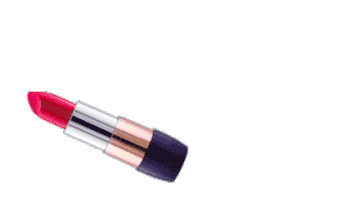Hair Under the Microscope: Discover Your Type and the Secrets to Perfect Care

In the world of hair care, we often find ourselves lost in a maze of advice, products, and opinions. Every hair is unique, and the key to beauty lies in understanding its individual needs. Curious about how to do that? Let's get started!
Identify Your Hair: Classification by Type
When starting your journey through the world of hair care, it's crucial to determine your hair type. Classification considers both the structure and condition of your hair, and understanding which category you belong to is the first step towards the right care.
-
Types Based on Structure
- Straight (Type 1): Smooth, shiny, often heavy, can tend to be oily.
- Wavy (Type 2): Characterized by natural waves. Can be prone to frizz.
- Curly (Type 3): Strong curls and spirals. Require moisture to prevent dryness.
- Coily (Type 4): Very tightly curled, often appears dry and is prone to breakage.
-
Types Based on Porosity
- Low Porosity: Hair cuticles lie tightly against each other, making it difficult for products to be absorbed.
- Medium Porosity: Cuticles are slightly open, hair absorbs and retains moisture well.
- High Porosity: Cuticles are very open or damaged, hair absorbs moisture quickly but loses it just as fast.
-
Types Based on Density
- Thin: Few hairs per square inch, tends to get oily quickly.
- Medium: Standard amount of hair, easy to manage.
- Thick: Lots of hair, can be difficult to style.
How to Choose the Right Care?
-
For Straight Hair: Focus on lightweight products that won’t weigh your hair down. Avoid heavy oils and butters. Cleansing shampoos and lightweight conditioners are best.
-
For Wavy Hair: Find a balance between hydration and maintaining volume. Use lightweight curl creams and mousses that emphasize waves without frizz.
-
For Curly Hair: Moisture is key! Look for products rich in oils and butters. Regular use of hydrating masks will keep your hair in good condition.
-
For Coily Hair: Intensive hydration and nourishment are essential. Avoid sulfates and silicones that can further dry out your hair. Regularly applying deeply hydrating treatments is crucial.
Care Based on Porosity
-
Low Porosity: Use heat to help open the hair cuticles, making it easier for products to be absorbed. Lightweight oils, like jojoba, are best.
-
Medium Porosity: You have a lot of freedom in choosing products. Focus on a balance between proteins and moisture to keep your hair healthy. Products with balanced ingredients will be ideal.
-
High Porosity: Focus on protein-rich products that help strengthen the hair structure. Oils that “seal” moisture, like coconut or argan oil, are perfect for maintaining moisture in the hair.
Care Secrets for Every Hair Type
In addition to choosing the right products, there are universal care principles that will help maintain the health and beauty of your hair, regardless of type:
-
Regular Trimming: Trimming the ends every 6-8 weeks prevents split ends and breakage, which is essential for maintaining healthy length and volume.
-
Heat Protection: Using heat styling tools can damage your hair. Always use heat-protectant products and, if possible, let your hair dry naturally.
-
Gentle Washing: Choose shampoos without harsh detergents, like SLS (Sodium Lauryl Sulfate), which can dry out the scalp and hair. Mild formulas tailored to your hair type are best.
-
Moisturizing and Nourishing: Regular application of masks and conditioners is essential for hair health, strength, and shine. Don’t forget to oil your hair, especially if it’s dry, damaged, or prone to curling.
-
Careful Brushing: Gently detangle, preferably with a brush with natural bristles or a wide-tooth comb, to prevent breakage and damage.
Conclusion
Your hair is like a fingerprint - unique and irreplaceable. The key to its beauty lies in understanding its individual needs and matching them with the right care. Regardless of your hair type, remember that regular care, gentle handling, and the right product choices form the foundation for enjoying healthy, shiny, and vibrant hair.
Find your hair care routine, experiment with products and techniques, but most importantly, listen to your hair - it will tell you best what it needs. Remember, all hair is beautiful when it is healthy and happy. Discovering your own path to care can be a fascinating journey where you not only learn about your hair but also about yourself.







Comments : 0